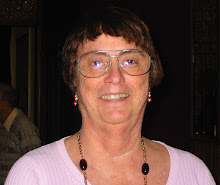Assos to Akhisar, Tuesday, June 22, 2010: After breakfast, we boarded our tour bus and departed somewhere around 8:00 a.m. for our first stop at Bergama. We visited the archeological sites of the Pergamum Acropolis and Asklepion. The Acropolis was the site of temples to Zeus, Athena, Trajan and others. Another structure of interest is the Library at Pergamum, which rivaled the Egyptian Library at Alexandria. Because of this rivalry the Egyptians stopped exporting papyrus to Pergamum. The Pergamenes invented a paper - from treated animal skin - parchment which led the invention of paged books. The parchment derived its name from the word "Pergamum" and had so many advantages that in time books replaced scrolls.
Things this acropolis has in common with all the others we visited are uneven walking surfaces and massive stairs. The top level of excavation of most of the ruins we visited tended to be structures built by the Roman Empire or converted by the Romans from structur
 es built by earlier civilizations. At that point in time, the average Roman stood about 5’4”. So why do the marble stairs they constructed all have risers of 12 to 18 inches? One needs to be a mountain goat to ascend and descend. Perhaps it was one of many defense mechanisms. An acropolis is built at the highest point in the area. They were walled and approaching them was difficult. These cities were destroyed either by earthquake or fire, which is why there are so many layers of different cultures, city after city built upon the ruins of another.
es built by earlier civilizations. At that point in time, the average Roman stood about 5’4”. So why do the marble stairs they constructed all have risers of 12 to 18 inches? One needs to be a mountain goat to ascend and descend. Perhaps it was one of many defense mechanisms. An acropolis is built at the highest point in the area. They were walled and approaching them was difficult. These cities were destroyed either by earthquake or fire, which is why there are so many layers of different cultures, city after city built upon the ruins of another.  Below the Pergamum Acropolis is the Asklepion which is a famed ancient medical center built in honor of Asklepios, the god of healing. Treatments included psychotherapy, massage, herbal remedies, mud and bathing treatments, the interpretation of dreams, and the drinking of the water. Patients brought offerings, usually representing the part of the body requiring healing. A holistic approach was used recognizing that spirit, mind, and body each influence the others. I was very impressed with what these ancient physicians were able to accomplish.
Below the Pergamum Acropolis is the Asklepion which is a famed ancient medical center built in honor of Asklepios, the god of healing. Treatments included psychotherapy, massage, herbal remedies, mud and bathing treatments, the interpretation of dreams, and the drinking of the water. Patients brought offerings, usually representing the part of the body requiring healing. A holistic approach was used recognizing that spirit, mind, and body each influence the others. I was very impressed with what these ancient physicians were able to accomplish.When we left the sites at Pergamum it was time for lunch, so our next stop was Densen Halicilik Carpet Weavers Association co-operative. We had the opportunity to view cocoons spun by silkworms, being processed into silk thread and then spun into yarn. We saw a variety of yarns wool, cotton, and silk which were dyed using only natural vegetable dyes. We watched the weavers create the Turkish carpets which are so beautiful. Then were fed a light lunch while we we viewed magnificent carpets, one by one. After viewing handmade carpets and
 the labor that goes into creating one, it is understandable why these creations are so costly. A large carpet may take up to six years to weave. The first one that caught my attention, silk on silk, was $26,000. Since it was out of my price range, I settled for cotton on cotton, measuring 18" by 24", at a cost of $400. My heirs will be able to sell it at a good profit. Our group of 22 tourists bought a number of carpets that day. 90% of the proceeds go directly to the weavers. The co-op operating expenses are subsidized by the Turkish government, so the profit goes to the artisans.
the labor that goes into creating one, it is understandable why these creations are so costly. A large carpet may take up to six years to weave. The first one that caught my attention, silk on silk, was $26,000. Since it was out of my price range, I settled for cotton on cotton, measuring 18" by 24", at a cost of $400. My heirs will be able to sell it at a good profit. Our group of 22 tourists bought a number of carpets that day. 90% of the proceeds go directly to the weavers. The co-op operating expenses are subsidized by the Turkish government, so the profit goes to the artisans.After a very full day with many worthwhile experiences we spent the night at the Palm City Hotel in Akhisar. This resting place left much to be desired. Our guide, Mahmet, assured us he would recommend that the tour company not use this hotel in future.







